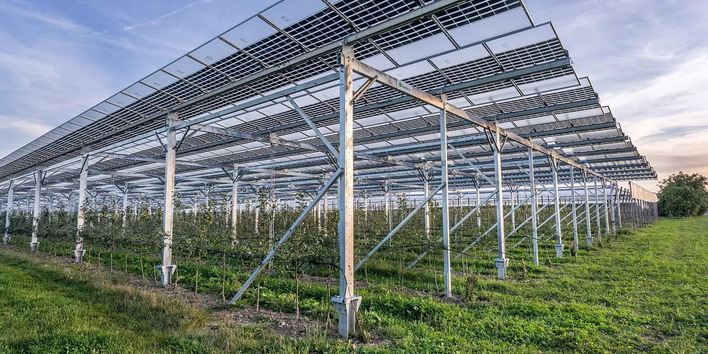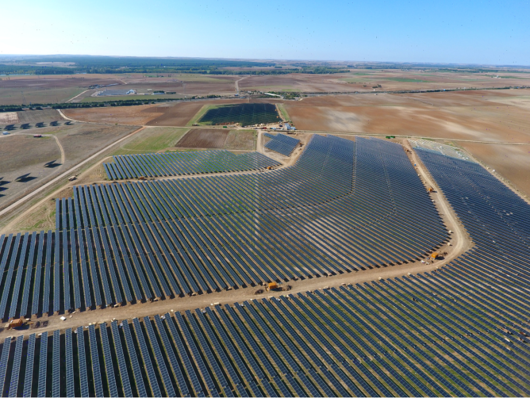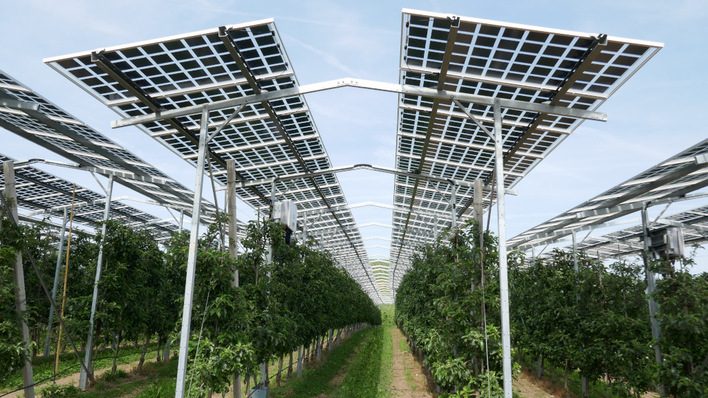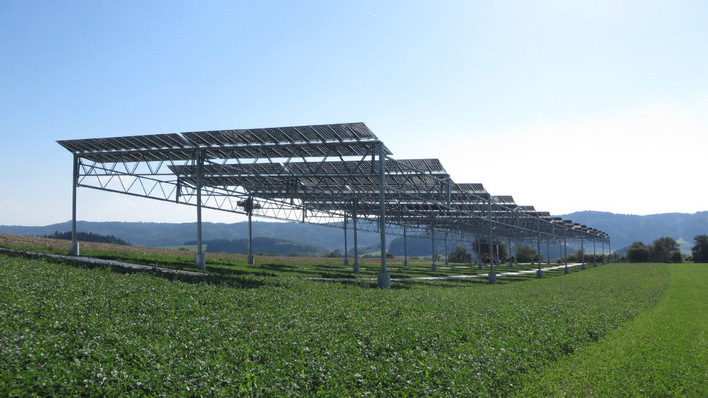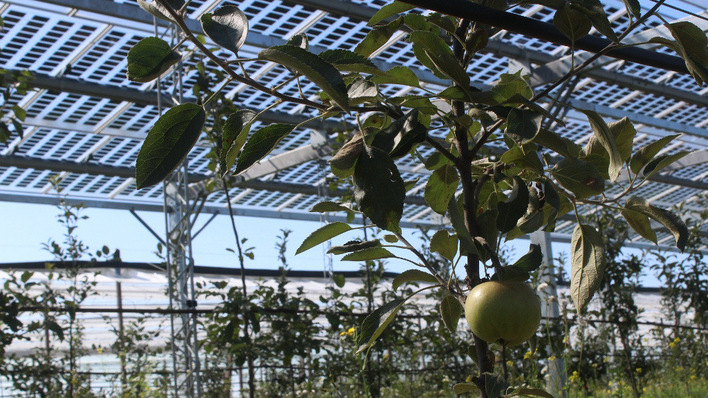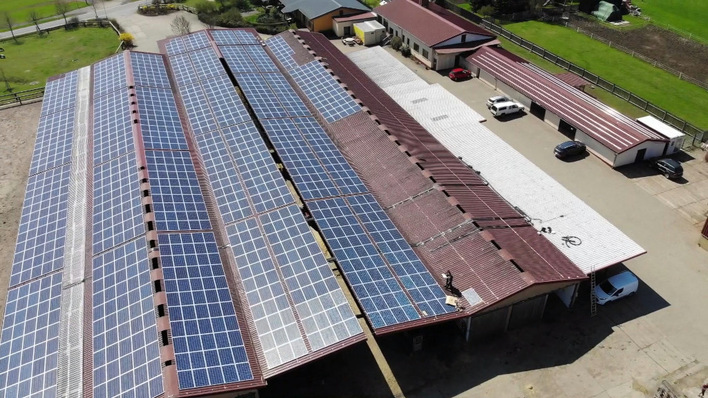Across Europe, more and more farmers are looking to make dual use of their land by combining agriculture with solar power. Smaller systems near the farmyard offer added flexibility, but in many cases, the electricity they generate isn’t used on site. That means the systems still depend on feed-in incentives to remain economically viable.
Complete package includes marketing
To reduce this dependency, system provider Gridparity has revised its portfolio of mounting systems as part of an agri-PV initiative. The company has also developed a turnkey concept.
Stay informed about the solar energy transition – subscribe to our free newsletter now
The so-called Farmhub concept is a modular energy centre located on the farm. Alongside the agri-PV system, it includes battery storage, a grid connection and flexible electricity marketing. Gridparity has designed its systems to allow the addition of battery storage with a capacity of five or ten megawatt hours. The company expects prices for a complete Farmhub system to start at €1.1 million per megawatt, including grid connection.
New income with storage
Integrating battery storage does raise initial investment costs. However, it enables the system operator to provide grid services, control feed-in from the agri-PV system and participate in electricity arbitrage. This involves charging the battery with low-cost grid electricity and feeding it back in when market prices are higher.
Expert analysis: Italian agrivoltaics evolving into standalone industry
Configuring the system correctly
The agri-PV systems are also designed to align with the agricultural use of the land. Gridparity has developed eight variants that can be individually configured based on crop type, light requirements and soil conditions. The systems use either single-axis trackers, mono-pitch roofs or pitched roofs. For the tracker systems, Gridparity installs bifacial solar modules produced at its own facility in Slovakia.
Solar-backed biogas – how hybrid systems add value
For the mono-pitch and pitched roof systems, farmers can use modules with varying degrees of transparency. This semi-transparency allows enough light to reach the plants growing beneath the agri-PV. The systems are particularly suited to specialised crops such as berries, lettuce, herbs, wine, extensive grassland or animal farming.
About 600,000 euros for a turnkey megawatt
Gridparity quotes prices of around €350,000 per megawatt for the agri-PV system alone. This covers the full installation excluding grid connection. Turnkey systems including a transformer station, medium-voltage equipment and grid connection cost roughly €600,000 per megawatt. (su)




